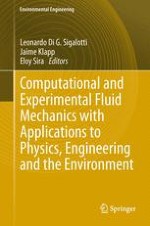2014 | OriginalPaper | Buchkapitel
Fluid Mechanics and Systems Biology for Understanding the Cosmic Distribution of Life: A Review
verfasst von : Julián Chela-Flores
Erschienen in: Computational and Experimental Fluid Mechanics with Applications to Physics, Engineering and the Environment
Aktivieren Sie unsere intelligente Suche, um passende Fachinhalte oder Patente zu finden.
Wählen Sie Textabschnitte aus um mit Künstlicher Intelligenz passenden Patente zu finden. powered by
Markieren Sie Textabschnitte, um KI-gestützt weitere passende Inhalte zu finden. powered by
